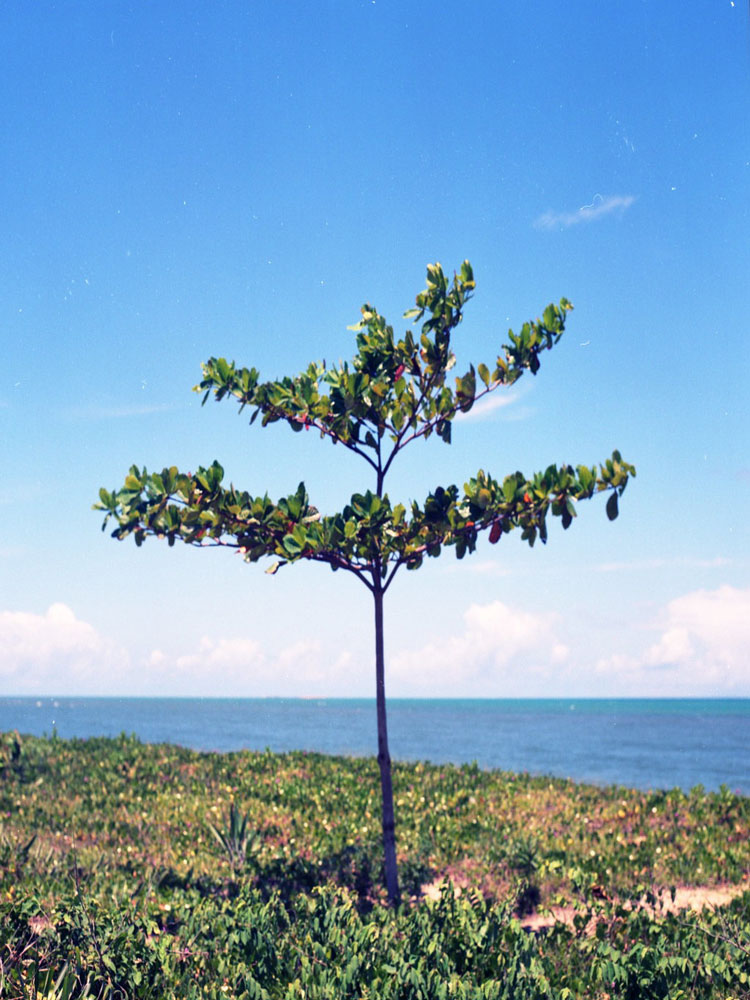Desi-badam - Indian almond

Terminalia catappa
Summary
Scientific Classification
Kingdom: Plantae
Division: Angiospermae
Class: Dicotyledonae
Order: Myrtales
Family: Combretaceae
Genus: Terminalia
Species: T.catappa
Scientific Name: Terminalia catappa L.
Common names
English: Indian almond.
Hindi: Jangli-badam, Desi-badam.
Kannada: Kadubadami, Badami Mara.
Marathi: Bengali Badam.
Description
- Habit and Habitat: fast-growing, deciduous tree with a pagoda-like crown with layers of branches spaced at about 1–2 m apart. They can grow up to 25 m tall. It grows in coastal thickets, beaches, rocky shores, sand dunes, parks, gardens, and edges of mangrove swamps.
- Distribution: Naturally widespread in subtropical and tropical zones of Indian and Pacific Oceans and planted extensively throughout the tropics.
- Morphology:
Leaf: Alternate, 6-12 inch long, obovate, oblong, pointed at apex, base rounded with a depressed gland on each side of the midrib, exstipulate.
Inflorescence: Axillary solitary spikes.
Flowers: The plant is monoecious, producing both male and bisexual flowers. Greenish-white, small, bracteoles minute, lanceolate. Calyx-tube ovoid, teeth 4-5 triangular. Petals 0.
Androecium: Stamens 8-10, episepalous.
Gynoecium: Ovary inferior, ovules pendulous, style awl-shaped, stigma simple.
Fruit: As fibrous drupe, oval or ellipsoid, compressed, with 2 elevated margins, convex on both sides.
Seeds: Single seed. The seed within the fruit is edible when fully ripe.
Flowering and Fruiting time: August – September. - Propagation: by seeds.
- Importance: Planted in the gardens and can be used on road-sides as a shade-tree.The fruit is edible.The juice of the leaves is used in headaches and skin diseases.The fruit is cooling astringent to bowels.
- Location: Main Entrance Garden, Hostel, Sports garden.
 Trees of GSS Project supported by Makerspace Belgaum Website concept and designe by
Trees of GSS Project supported by Makerspace Belgaum Website concept and designe by